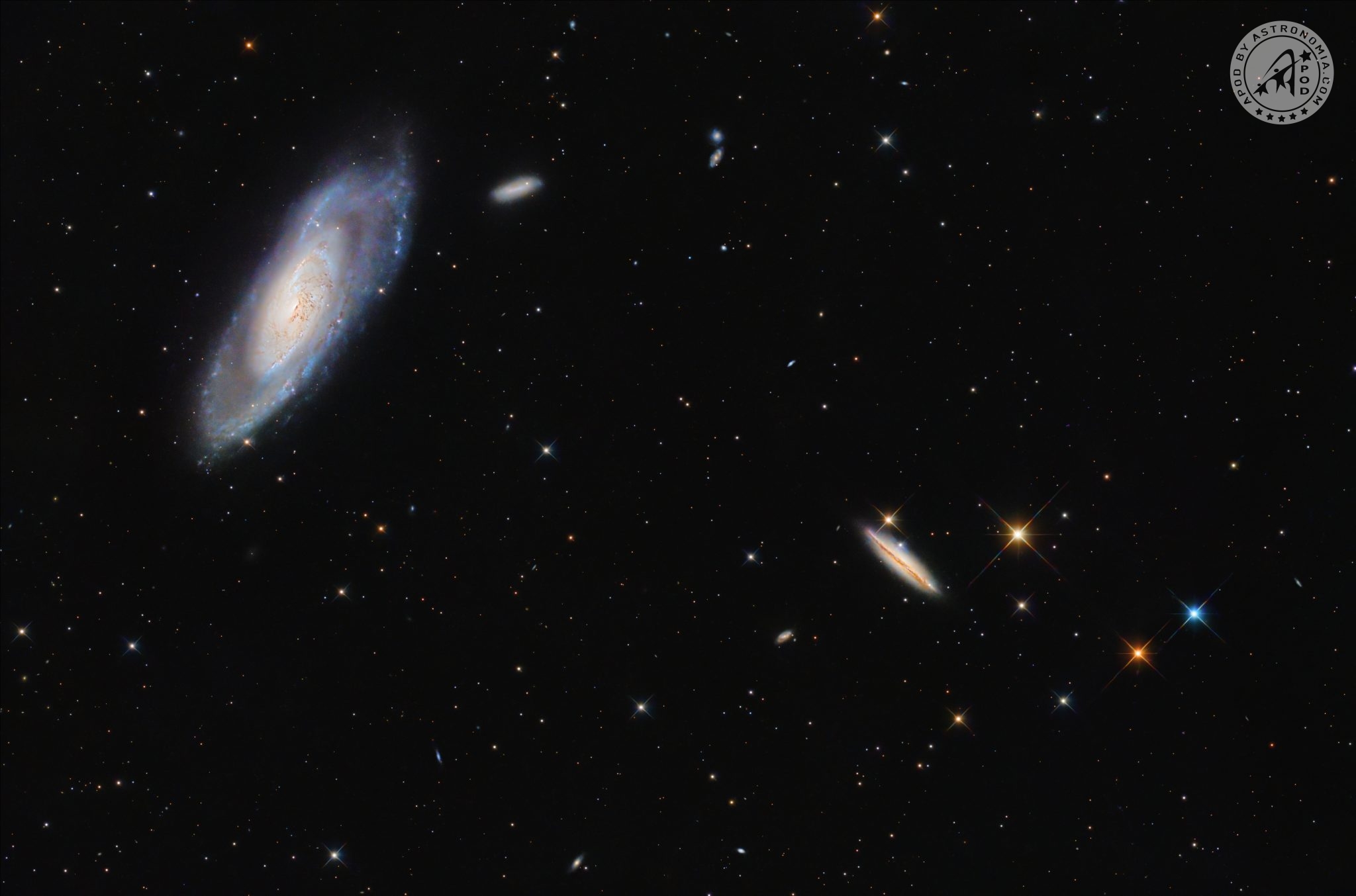Messier 106 + Marco Piccini + L-Pro
Messier 106
Credit: Marco Piccini (Italy)
Filters: Optolong L-Pro filter
Messier 106 (also known as M106 or NGC 4258) is a spiral galaxy located in the constellation Hounds, lies at a distance of 23.7 million light years from Earth and has an apparent magnitude of 9.1.
At its centre, as in most spiral galaxies, there is a supermassive black hole, but this one is particularly active. Unlike the black hole at the centre of the Milky Way, which only occasionally attracts bundles of gas, Messier 106's black hole is actively devouring material. As the gas spirals towards the black hole, it heats up and emits powerful radiation. Some of the emission from the centre of Messier 106 is produced by a process that is somewhat similar to that of a laser, although here the process produces bright microwave radiation.
The galaxy has another striking feature: instead of two spiral arms, it appears to have four. Unlike normal arms, these two extras consist of hot gas instead of stars and their origin has remained unexplained until recently. Astronomers think they are caused by the black hole in the heart of Messier 106, and are therefore a completely different phenomenon from the galaxy's normal star-filled arms.
Messier 106 has a companion galaxy, the spiral galaxy NGC 4217 (bottom right, near the 3 bright stars). NGC 4217 has a diameter of about 80,000 light years and appears almost perfectly slanted.
Technical details:
telescope: newton Skywatcher 200/1000
mount: eq6 R Pro
camera: Zwo asi 294 mc-Pro -5°C
Filter: Optolong L-Pro
9h (sub 180sec)
Author: Marco Piccini
APOD link: https://apod.astronomia.com/2024/05/21/m106/
Hope you like it.





